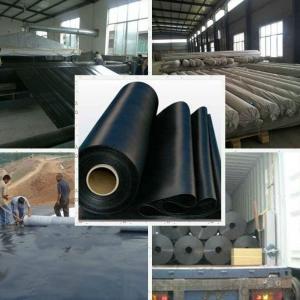Civil engineering and environmental projects often feature the term ‘pe geomembrane.’ It is a versatile material that finds its use in various applications, ranging from water management to waste containment. So what actually is PE geomembrane and why is it so important? Let’s delve into details and explore the world of PE geomembranes.
The first thing to do is to establish what a PE geomembrane is. A kind of synthetic liner typically made out of high-density polyethylene (HDPE), which happens to be a resilient, durable, flexible plastic. Also known for high chemical resistance value, low permeability as well as being UV rays resistant and weathering proof hence can be easily applied in different environmental and construction projects.
Landfills and waste containment facilities are two major areas where PE geomembranes are commonly employed. They have low permeability levels making it possible not for harmful substances to leak out into the environment. This helps in safeguarding groundwater and soil against contamination.
Another typical application for PE geomembranes occurs within the field of water management systems. Reservoirs, ponds and similar water storage facilities often use them as liners. These structures are nonpermeable hence save all water inside them by preventing evaporation or infiltration.
Further still, these materials find their use in tunneling systems as well as canal building projects. Given that the ground may shift or settle over time, this makes them suitable due to their flexibility combined with strength characteristics which make them prevent any seepage of both water or other materials into or from such structures.
But how about installation? Getting the right installation technique means ensuring efficacy of the PE geomembrane. Starting from preparing its laying surface whereby it should be clean, smooth without any sharp objects that might puncture through it while spreading out on top; finally sealing off all seams along with joins around that could lead to leaks if not properly done.
Maintenance is another key consideration when it comes to PE geomembranes. With time, these materials may wear out and ought to be checked regularly for any signs of damage. This helps solve minor problems before they become major.
In terms of environmental impact, PE geomembranes are generally considered to be a sustainable option. They are created from a material that can be recycled and which does not break down over long periods. This in turn minimizes the total ecological footmark associated with such projects.
However, it is worth noting that both production and disposal of PE geomembranes can have an adverse environmental impact. These issues need to be taken into account when deciding whether or not to use this substance as well as ensuring its proper disposal once its lifecycle ends.
To conclude, PE geomembranes form a crucial part of many civil engineering and environmental projects. They can serve various purposes due to their versatility, strength and durability features. By knowing the characteristics and applications of PE geomembranes we will learn why they matter; how do we use them properly?







